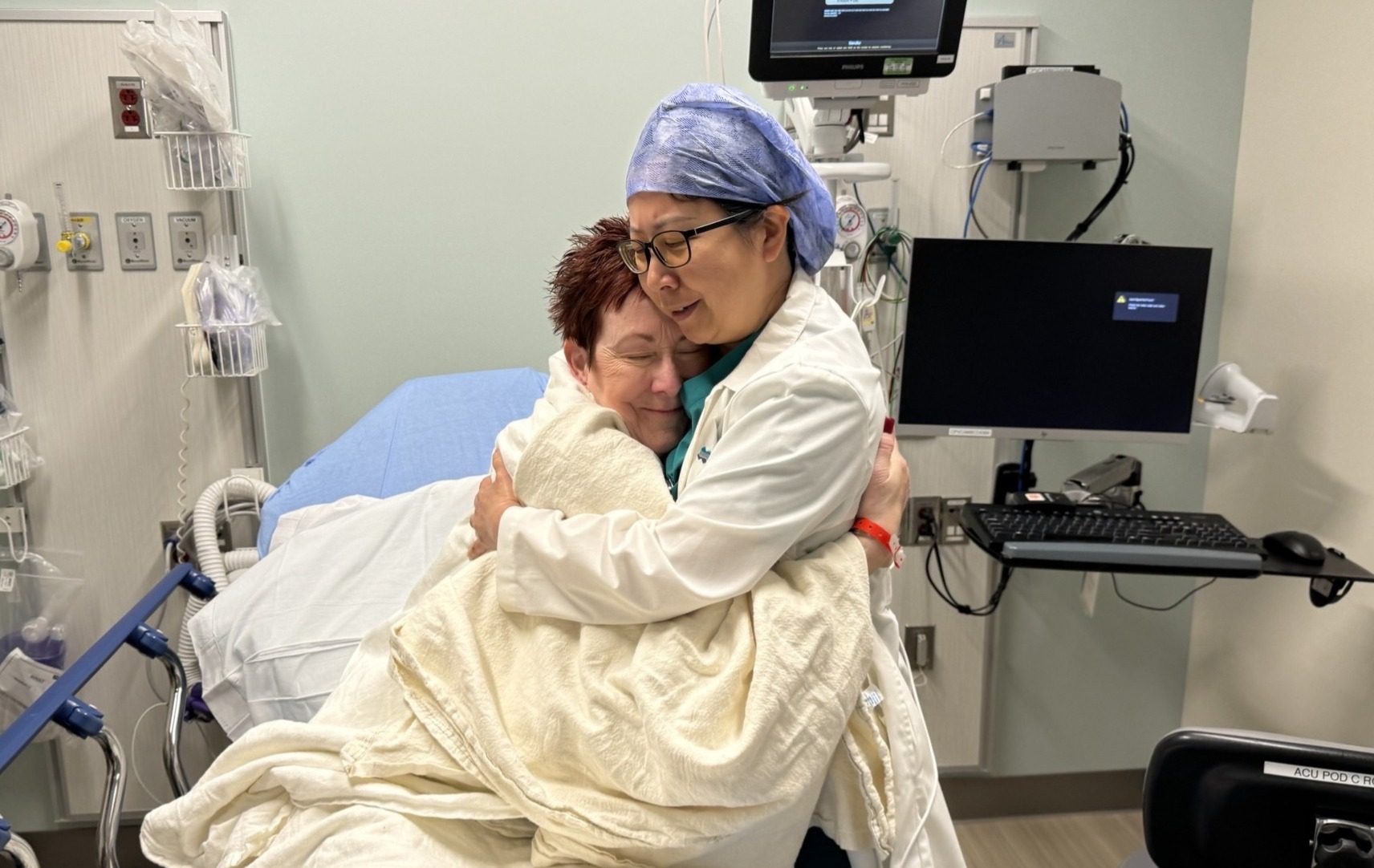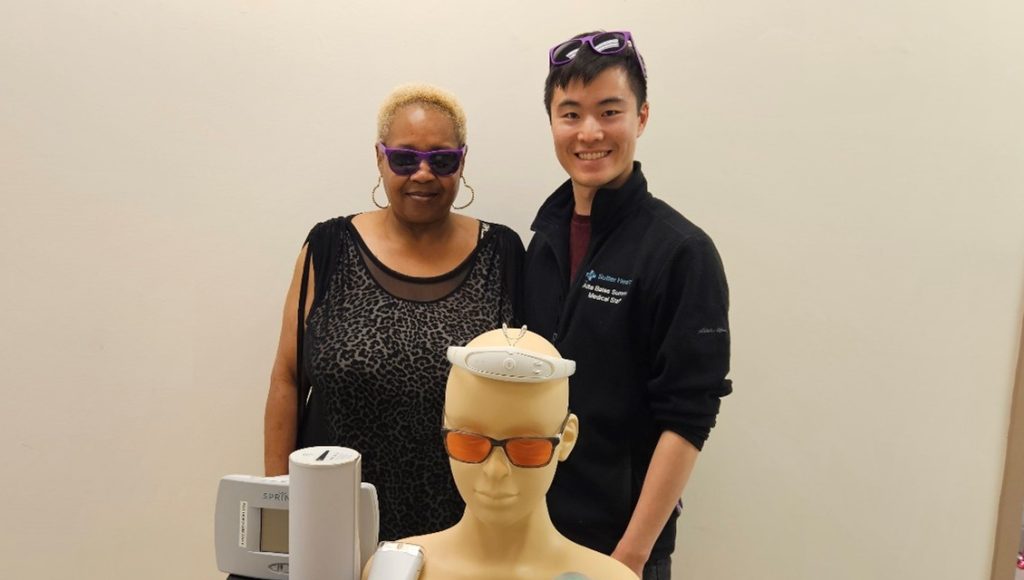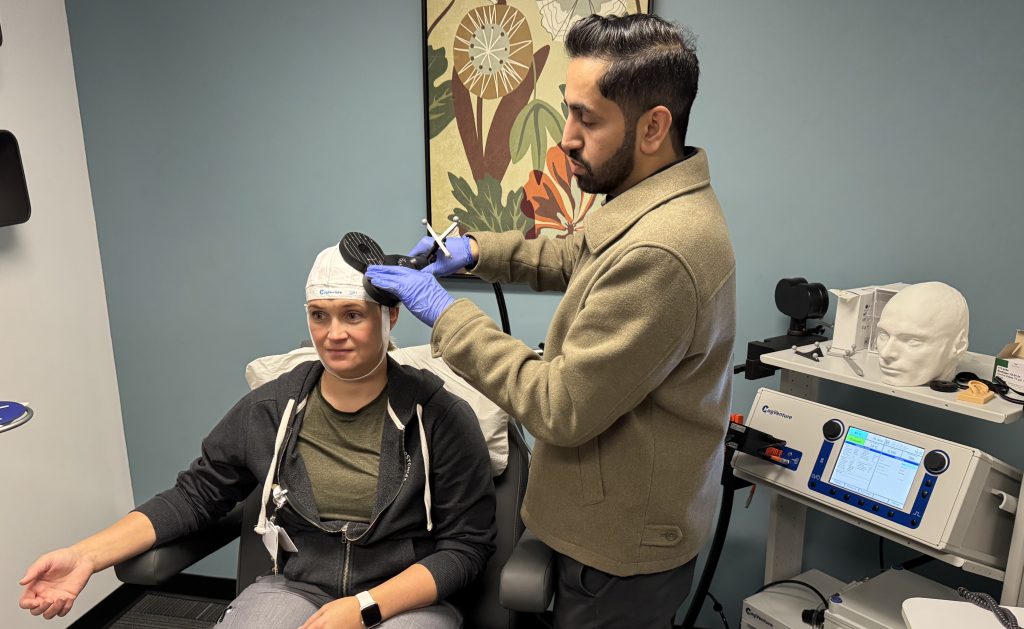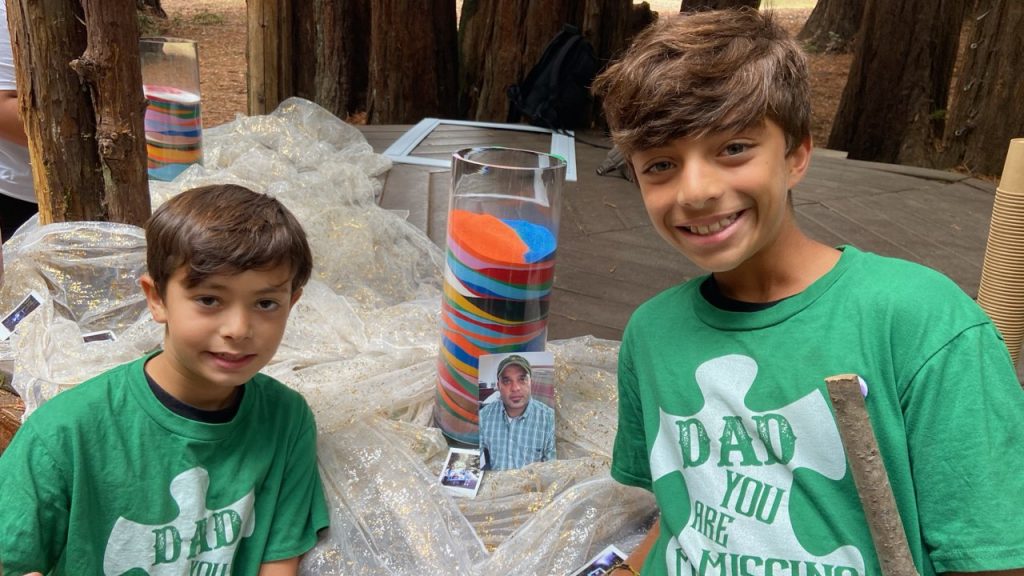Photo caption: Patient Allison Villegas embraces Dr. Mimi Lin before undergoing surgery for a gastric stimulator implant at California Pacific Medical Center’s Van Ness campus.
By Jennifer Modenessi-Gurule, Vitals contributor
Minutes before her surgery at California Pacific Medical Center’s Van Ness campus, patient Allison Villegas was all smiles.
She beamed as she hugged Dr. Mimi Lin, the neurogastroenterologist on her care team who she calls her “life saver.” She cheerfully greeted surgeon Dr. Anthony Squillaro right before he dove into explaining her procedure. And she smiled for a photo while holding a gastric stimulator, a palm-sized device resembling a pacemaker that sends electrical impulses to paralyzed stomach muscles to help them work.
In a few minutes, Dr. Squillaro would implant a permanent gastric stimulator into Villegas’ abdomen to control the vomiting and nausea she’s endured for more than two years because of gastroparesis. The chronic, often painful condition weakens digestion and delays stomach emptying leading to persistent nausea and vomiting, and eventually, weight loss, malnutrition and severe vitamin and calorie deficiency. But thanks to the skill, compassion and teamwork of her Sutter Health care providers, Villegas is finally on the road to experiencing some relief.
Rare Disorder, Silent Impacts
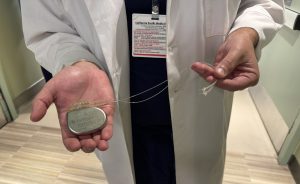
A gastric stimulator is a small device that sends electrical impulses to paralyzed stomach muscles to help them work.
Gastroparesis was once considered rare but better data collection about the disorder and those who have it is leading to more diagnoses. About 14% of the worldwide population has gastroparesis, and triggers include medications, diabetes and surgery.
For some gastroparesis patients like Villegas, the cause is unclear. And unlike more widely known diseases such as cancer and diabetes that produce physical and often visible impacts, people with gastroparesis may not appear unwell. However, the condition can be devastating.
“There is no cure, generally, and patients look OK on the outside, but they’re suffering incredibly,” said Dr. Lin, who serves as medical director of the Center for Neurogastroenterology & Motility at CPMC.
With gastroparesis, communication between nerves connected to the stomach, including the vagus nerve, and stomach muscles weakens or fails. The stomach is then unable to properly empty its contents by breaking down food and moving it to the small intestine. Food sits in the stomach, which can cause an early feeling of fullness, nausea and eventually vomiting.
“I had lost weight. I was dehydrated. For basically over two years, I’ve been sick and isolated,” Villegas said.
Searching for Relief
A physician may suspect gastroparesis based on clinical symptoms, but other digestive disorders can mimic it. And while an endoscopy can exclude conditions such as ulcers or obstructions, the most reliable test for diagnosis is a gastric emptying study, which uses nuclear medicine to observe how long it takes food to pass from the stomach to the small intestine.
Villegas, who lives in Chowchilla, a rural city 40 minutes north of Fresno in California’s Central Valley, was initially treated for a hiatal hernia and acid reflux at Sutter Memorial Hospital in Los Banos. When her symptoms didn’t resolve, her primary care physician referred her to Dr. Ambrish Ghumman, a Sutter Health gastroenterologist in Modesto. Following a gastric study, Dr. Ghumman referred Villegas to Dr. Lin at Sutter’s CPMC Van Ness campus.
After experimenting with medicine and less-invasive surgical interventions, Dr. Lin suggested that Villegas try a gastric stimulator. The device has been shown to reduce weekly vomiting in non-diabetic patients by as much as 87% at one year of use, according to its manufacturer, Enterra Medical. The stimulator is classified by the Federal Drug Administration as a humanitarian use device to treat or manage a disease or condition that affects less than 4,000 people per year in the United States.
Villegas test-drove a device last year to see if it would work for her. During a week of use, she was able to eat out and resume a few activities. “My life changed after getting the gastric stimulator. I didn’t want to give it up!” she said.
Walking the Journey
The permanent device Villegas received has two battery-powered wires that provide constant pulses to stimulate the nerves and muscles of a patient’s stomach. It is implanted via laparoscopic surgery with a few small incisions. The minimally invasive surgery can quicken recovery time, and the device provides “instant therapeutic benefit for patients,” Dr. Squillaro explained.
“The device is really modulating the nerves of the digestive track and is trying to give the patient a better quality of life, to be more active and to have better nutrition,” said Dr. Lin.
Even before her surgery, Villegas expressed her gratitude to her Sutter Health care team, from her doctors in the Central Valley to the team at CPMC.
“As a patient it’s like I’m family,” she said. “What truly fascinates me is the whole team listens to my concerns. You’re not a number, you’re a patient and they truly take time to listen and address your concerns.”
For Dr. Lin, the connection between physician and patient is a crucial part of treating a disease like gastroparesis.
“I think what patients need is someone who can walk this journey with them,” she explained. “For me, what’s most rewarding is to not only see patients feel a change in their life and to really participate in their life, but also to walk with them.”
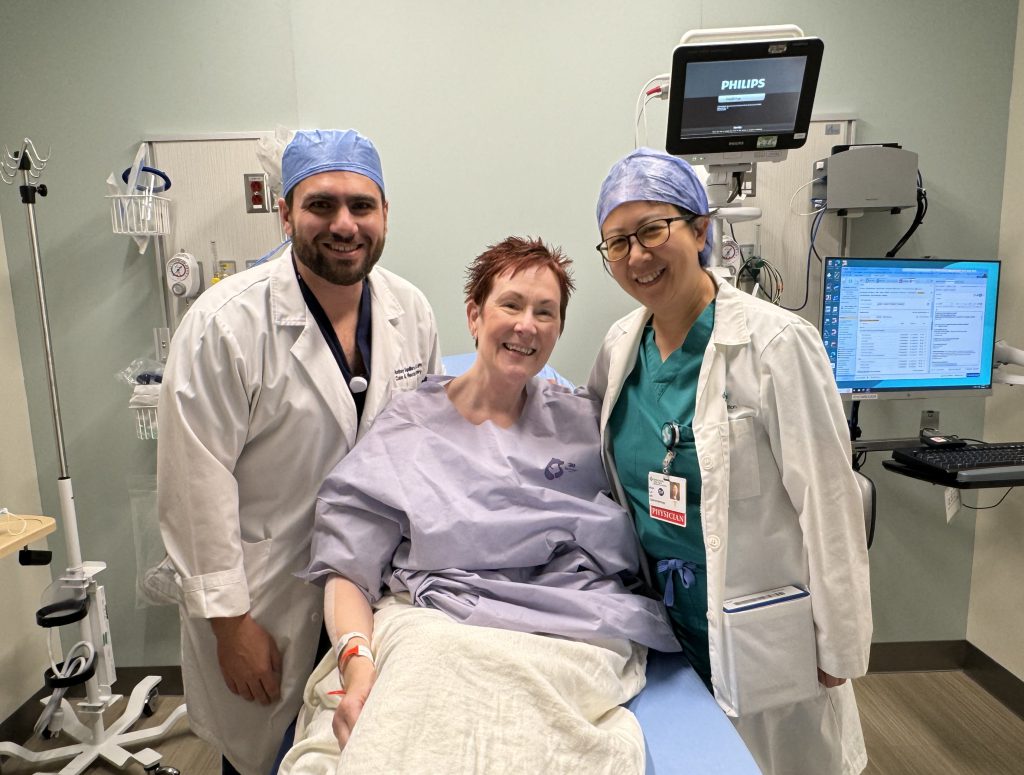
Patient Allison Villegas, center, with surgeon Dr. Anthony Squillaro, left, and neurogastroentereologist Dr. Mimi Lin, before her surgery at California Pacific Medical Center’s Van Ness Campus.

